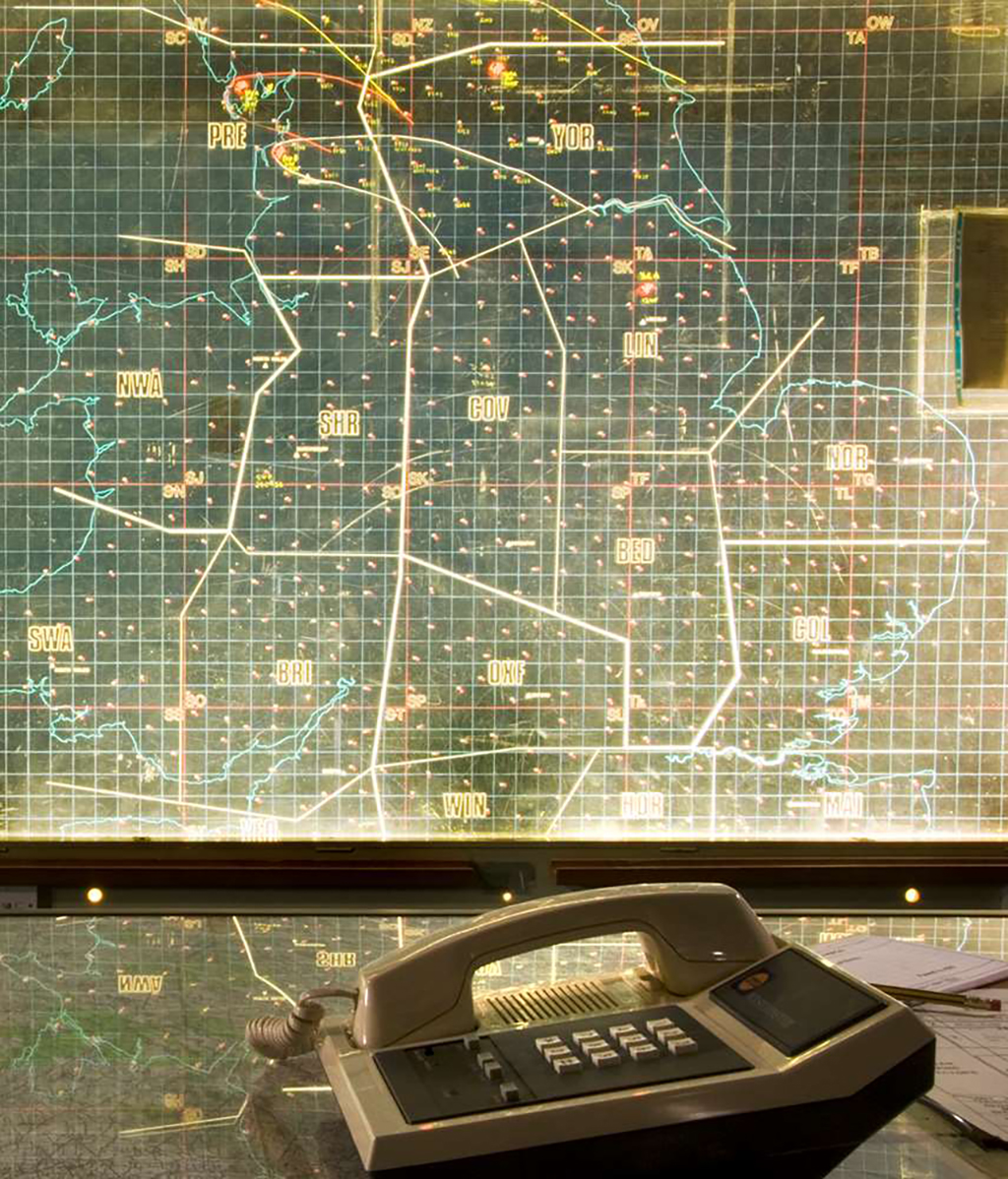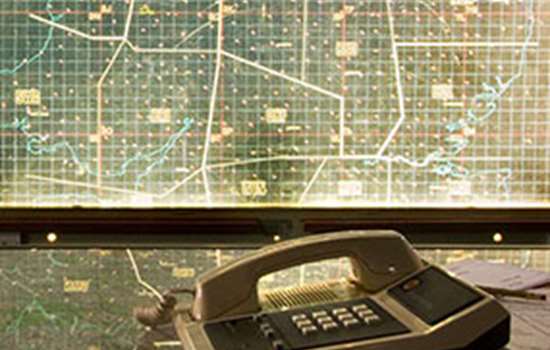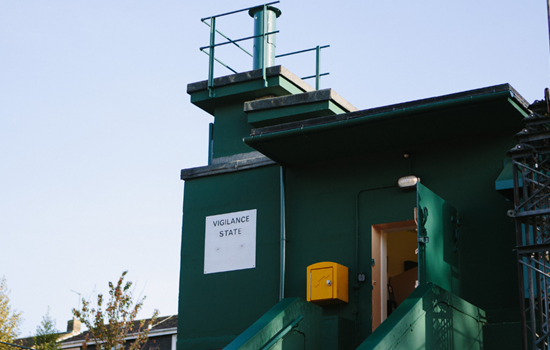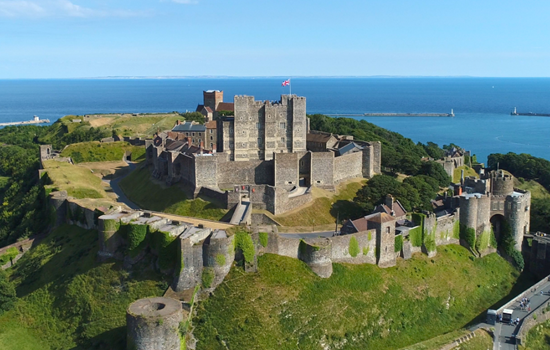UNLIMITED ACCESS TO OVER 400 HISTORIC PLACES
Live and breathe the story of England at royal castles, historic gardens, forts & defences, world-famous prehistoric sites and many others.
When atomic bombs were dropped on the Japanese cities of Hiroshima and Nagasaki in 1945 the future of warfare had changed forever. Clement Attlee soon warned in the aftermath that ‘only a bold course can save civilisation’. Scientists quickly calculated that if a weapon the size of the one detonated over Hiroshima was used against a typical British city, it would result in 50,000 casualties and 30,000 homes destroyed.
British policymakers had to think seriously about the possible impact that nuclear weapons could have. They adopted a dual strategy to deal with a potential nuclear war, the first element of which was designed to deter an attack from taking place. The UK formed military alliances, including as a founding member of the North Atlantic Treaty Organization (NATO) in 1949, a role spearheaded by the Foreign Secretary, Ernest Bevin.
The UK also aimed to deter attack by developing a stockpile of its own nuclear weapons. In 1952, Britain became the third nation to become an atomic power after the United States and the Soviet Union.

The second part of the strategy saw Britain devoting more resources to civil defence. After the experiences of the Blitz, planners felt that the morale of the population could sustain an attack. But rapid developments in atomic weapons meant that policy for managing a nuclear strike was constantly adapting.
The Civil Defence Service and Air Raid Precautions system was soon revived as the Civil Defence Corps in 1949, while the Royal Observer Corps (ROC), a civilian defence organisation which had operated since 1925, came to have increasing importance in defending against the effects of nuclear weapons. The ROC operated across a network of regional headquarters and control centres.
One such centre was York Cold War Bunker which, built in 1961, housed No. 20 Group YORK, ROC. Personnel working at the bunker had a crucial role if nuclear weapons were used on the UK or its nearest neighbours. They were to monitor nuclear explosions and to assess the impact of nuclear fallout in Yorkshire and the surrounding area.
Up to 60 personnel could be stationed at York bunker, including ROC staff working for the United Kingdom Warning and Monitoring Organisation, whose main roles were to warn the public of an air attack, confirm when a nuclear strike had occurred, and alert anyone of the approach of radioactive fallout. They used state of the art equipment, designed to measure things such as wind speed and direction and to test the levels of radiation in the atmosphere.
Find out more about York Cold War BunkerThe tunnels of Dover Castle, which had been the command centre of key Second World War operations like Operation Dynamo, continued to have a vital function in the Cold War. Dumpy, the lowest level of tunnels, was identified as a large shelter which could withstand nuclear fallout and in the early 1960s it was chosen as the regional seat of government for south-east England in the event of nuclear attack.
The tunnels were converted to include a centre of operations, living accommodation for staff, and a radio station. This, government planners hoped, would allow for systems of government to continue to function, even if communications had been disrupted. Should nuclear war break out, senior politicians and military personnel would make their way to the bunker to direct efforts to help the country recover.
More about Dover CastleTraining helped government officials, civilian and military participants to rehearse the outbreak of a nuclear conflict. Major exercises usually took place every year or two and sometimes involved cooperation with international allies. One such exercise was known as WINTEX-CIMEX.
WINTEX was the top-level exercise for political and military leaders responsible for making the key decisions to go to war and launch a nuclear attack. CIMEX was the rehearsal of plans to mobilise resources at the outbreak of war. It tested cooperation between the military and civil defence and involved members of the ROC stationed at York Bunker, and people working in the government tunnels of Dover Castle. Each exercise had a set of events which changed slightly each year and was designed to test how prepared Britain was for a real nuclear war.
During the peak of the Cold War, the threat of Mutually Assured Destruction was never far away and even without the most harrowing on-screen visuals, people were aware of tension and risk.
Fear of nuclear destruction led to the formation of protest movements, such as the Campaign for Nuclear Disarmament (CND), founded in 1957 by philosopher Bertrand Russell, which campaigned for Britain to decommission its own weapons stockpile. The CND gained widespread membership and included prominent public figures, including playwright JB Priestley, historian AJP Taylor, and lawyer and women’s rights activist Helena Normanton. For decades, protests took place at major military bases across the UK. Former ROC members recall similar, smaller, protests taking place outside monitoring posts.
Protests and campaigning against nuclear weapons also came from the scientific community. A lifelong pacifist, the crystallographer Kathleen Lonsdale spoke of the dangers of nuclear physics. Patrick Blackett, who had won the Nobel Prize for Physics in 1948, advocated for international cooperation on atomic science for peaceful purposes, which would include the Soviet Union. Abdus Salam, also a winner of the Nobel Prize for Physics (in 1979), and who had helped Pakistan develop its nuclear capacity, later became an advocate for nuclear disarmament.
The 1970s saw a thawing in direct tensions between the Soviet Union and the West, though proxy wars continued. The Vietnam War (1955–1975) proved a defeat for the US, and the Soviet-Afghan War (1979–1989) a defeat for the Soviet Union.
Tensions sharply increased in the 1980s, as the Soviet Union and the US sought to outspend each other and secure global military dominance. US cruise missiles were placed in the UK to significant public opposition, such as the Women’s Peace Camp at Greenham Common. The UK created the Trident system to modernise its nuclear deterrent and CND organised large demonstrations to protest against the nuclear threat.
In the late 1980s, popular uprisings across Eastern Europe brought an end to communist rule. The Communist Party of the Soviet Union started to fail and in 1989, the Berlin Wall fell. In December of that year, world leaders declared the end of the Cold War. By 1991, the Soviet Union had split into smaller countries.
With the immediate threat of nuclear conflict lifted, the UK government restructured the armed forces to adapt to a post-Cold War world. The ROC were disbanded as their role in a nuclear conflict was no longer deemed necessary. York Cold War Bunker was closed in 1992 and restored by English Heritage between 2000 and 2006.
By William Butler, The National Archives
Listen to stories about the Cold War from our sites, collections and the people commemorated by blue plaques.

Hear about York Bunker and the history of the Cold War in Britain, and hear first-hand from one of the ROC volunteers who trained there.
Discover how York Cold War bunker is an eerie monument to a time when nuclear weapons first threatened to destroy civilisation.
Find out about the history of the ‘Dumpy’ level of Dover’s secret underground tunnels with Cold War expert Mark Bennett.
Hear about Cold War computers and anti-nuclear protests at York Nuclear Bunker from historians and former Royal Observer Corps volunteer, Noreen.

Discover the semi-subterranean bunker that would have monitored nuclear explosions and fallout across Yorkshire if the Cold War had turned hot.

Explore the tunnels where key Second World War operations were masterminded and where one was secretly selected as a Cold War nuclear bunker.